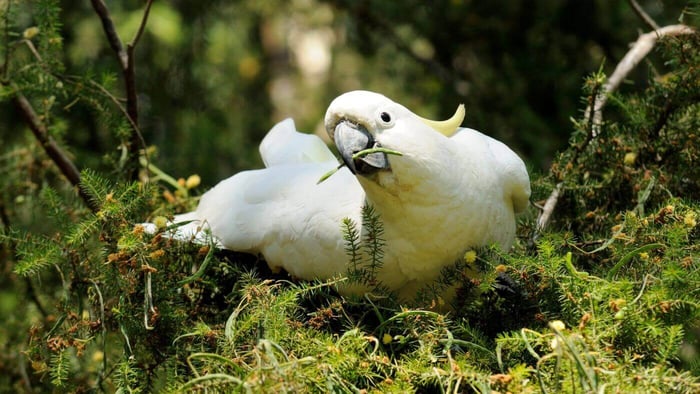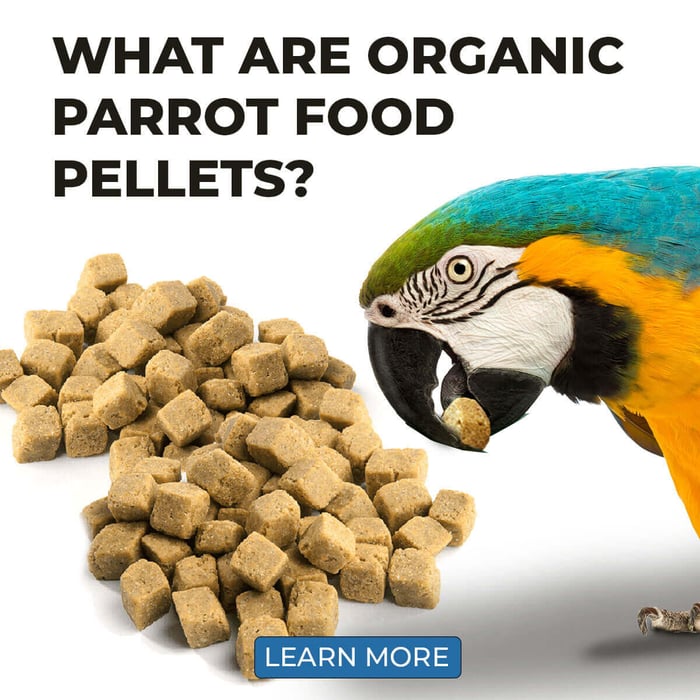Parrot Food - Why Foraging Is Important To Pet Parrots?
It's well-known that many domestic parrots deal with mental health problems that can present in plucking, screaming, biting and other unwanted behaviours. The cause, in many cases? Boredom. Now, you can give your parrot more toys, but there's also another option that might even be superior: foraging. This usually involves concealing parrot food and encouraging your pet to figure out how to get it.
Keep reading for more information on why foraging for parrot food is so important, as well as creative foraging toys and solutions for pet birds!
Parrot Food: Make Them Work for It!
Understanding The Parrot Brain
So why exactly is foraging something you should be including in your parrot's day? Well, in the wild, these birds spend large parts of their day searching for food. Their brains are wired to always be on the hunt for tasty morsels of fruit, flowers, seeds and seasonal treats.
Think about it: in the wild, a parrot has to have a keen eye and often travel great distances to find something to eat. And it doesn't end there. Once the food has been located, it's not always ready to eat. Nuts have to be cracked. The fruit has to be opened. It's a day job!
Presenting parrot food in an easily accessible bowl the way we tend to do might seem logical to us. It's also easy, reduces messes and ensures we can see exactly what our parrots are and aren't eating. However, for our birds, presenting pre-chopped food on a platter is like taking away their job and purpose.
Just like humans, parrots are not made for sitting around, not doing anything. They need a hobby and, as suggested by researchers, a degree of control over how they choose to spend their time (Coulton, Waran & Young, 1997).
The chances of boredom will increase without foraging. With that, the possibility of the bird starting to behave in ways that we humans see as unwanted will also go up.
A 2008 study by Lumeij & Hommers found that feather-plucking African grey parrots' feathers would improve if they were presented with a simple pipe foraging toy. This suggests that foraging can help redirect self-damaging behaviours and probably also aid in preventing them altogether.
Using Parrot Food To Keep Parrot Brains Busy
So, let's give those parrots a job! Sure, it's fine to still use a food bowl to present basic daily meals. However, from now on, try to also include at least one' food puzzle' a day.
Try offering options with foraging parrot toys that your bird has to do plenty of work for: wild birds fly many miles a day in search of food, so some extra exercise will never be a bad thing for your domestic one. It's a double advantage of keeping the bird's brain and body busy, thereby reducing the chances of obesity (a huge silent parrot killer).
There's even something in it for you. Seeing your parrot display its natural seeking and shredding behaviours is a pretty magnificent thing! All of them are extremely smart and benefit from the brain stimulation that foraging offers, even the smallest pet parrot, like a budgie. To sum things up, as stated in the article on parrot enrichment: busy beaks belong to happy birds.
Fun fact: many parrots will actually be more interested in their food when it's presented in a foraging setting. There's even a term for this: contrafreeloading.
You might find that your parrot goes for the foraging toy, even if the exact same food is also available in its bowl. A pretty good indication that foraging truly is something that enriches their life!
Foraging For Parrots: How To Teach Them To Work For Their Parrot Food?
It should hopefully be clear now why your parrot's toy selection should include a good range and options of foraging parrot toys. It's important to keep in mind, though, that some birds don't immediately understand what the deal is.
If a parrot wasn't raised with the option of searching for food, it'll take a bit of encouragement on your end to activate its instinct. No problem! Let's start by simply dividing a parrot's foraging capacity into four categories: no experience, beginner, intermediate and expert.
Foraging Toys For Parrots With No Experience
For parrots that have no experience, you'll have to start out with very easy options. To get the bird interested, you may have to use 'junk' treats at first and slowly phase them out in favour of healthier options. Foraging enrichment can include, but is, of course, not limited to:
- Fresh branches with bird-safe leaves and flowers.
- Kabob skewers with fresh fruits, veggies and other yummy parrot food.
- A food bowl with a strip of paper covering the middle, making your pet go around or destroy the strip.
- A Tupperware filled with shredded paper or cut-up grass and some parrot food. For larger birds, you can use a bigger box filled with bottle caps, wine corks and other small toys.
Inexperienced foragers may be weary of parrot food presented in ways they don't recognize. Try enticing yours with fresh green leaves on a potted herb plant!
Foraging Toys For Beginner Parrots
Does your parrot seem to be catching on? It can take a while for them to lose their fear of all these strange new items, so don't worry if your bird doesn't take to it immediately! Once it's happily foraging along on the easy options, it's time to up the game.
- Kabob skewers that include not just fruits and veggies, but also rattan balls and some fun stuff to shred.
- Fresh, whole vegetables and fruits with small pieces of nuts stuck in. Maybe even a tiny smear of peanut/almond butter (organic and no sugar added)! This will hopefully encourage the parrot to start shredding and munching on the whole thing.
- Cover the food bowl with paper and make a hole in the middle. Stick an almond or a piece of vegetable in the hole to get the bird's attention.
- Stuff grass or stringy veggie bits into a foraging parrot food ball and hang it in the cage.
- Cut holes into a paper cup and leave the lid off. Thread the cup on some rope and stuff it with easily visible parrot food.
- Stuff small treats into (untreated) pinecones.
For beginners, keep the food visible but place it just out of reach.
Foraging Toys For Intermediate Parrots
At this point, your parrot should be getting pretty interested in new things that pop up in the cage. Anything could turn out to contain tasty morsels! You might even start to see a preference for certain foraging styles. Let's continue.
- You can probably start to introduce commercial foraging toys now. Simple wheels and treasure chests should be no problem at this point!
- Make the food kabobs a bit more inconspicuous. Hide parrot food items using muffin cups or egg carton pieces so the bird really has to look for them.
- Large birds might like pieces of soft balsa wood with holes in them, containing nuts or other treats that are just out of reach. They'll be busy for ages chewing and foraging for their food.
- Make paper balls stuffed with treats that are not visible until the parrot chews them up.
Foraging Toys For Expert Parrots
If your parrot is going through all of the foraging levels fast, it's time to step it up a notch. You can start to introduce foraging options that involve actual puzzles to really engage the bird's problem-solving skills. You'll be amazed!
- There are many fun puzzle foraging toys for parrots out there like foraging puzzle treat towers. With these, the parrot has to figure out how to get the food to fall out of the tower.
- Go for a next-level treasure chest that involves having to turn a pair of keys before it opens.
- Take a nut and place it in the middle of a shredded paper ball. Tightly wrap the ball for lots of shredding fun with a reward at the end.
- A clear foraging rattle with holes that are just large enough for a parrot tongue to go through can keep the bird busy for hours.
Tip: Foraging doesn't only have to involve food. Many parrots will also be happy to work for small toys.
Conclusion
As you should hopefully have concluded, foraging is an integral part of parrot enrichment. Every parrot owner should offer foraging toys and other mind-engaging activities, such as foraging boxes.
Give it a try: you'll love seeing your parrot go from being confused by the simplest puzzle to an expert forager. It doesn't have to take much time to come up with foraging toys for parrots, as there are many places out there to find simple but engaging ideas. Try Pinterest and Facebook groups for DIY options, or order a variety of foraging toys for parrots online.
Have you tried offering foraging-based enrichment to your parrot? Be sure to leave a comment below and share your experiences and your best-foraging toy ideas.
Sources
Coulton, L. E., Waran, N. K., & Young, R. J. (1997). Effects of foraging enrichment on the behaviour of parrots. ANIMAL WELFARE-POTTERS BAR-, 6, 357-364.
Lumeij, J. T., & Hommers, C. J. (2008). Foraging 'enrichment' as treatment for pterotillomania. Applied Animal Behaviour Science, 111(1-2), 85-94.




